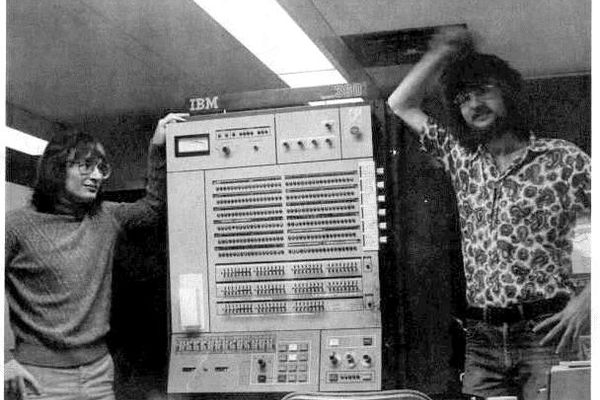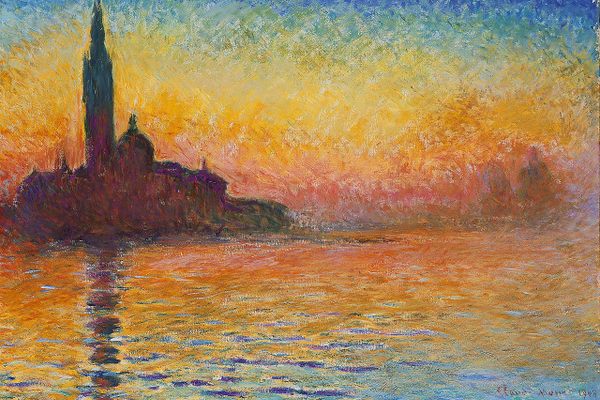Fake Road Trippin’ Through Europe In A Computer-Generated Truck
 Hauling some tubes through the Alps. (Screenshot: Joshua Livingston/Flickr CC-BY 2.0)
Hauling some tubes through the Alps. (Screenshot: Joshua Livingston/Flickr CC-BY 2.0)
The call of the open road can be unrelenting. Once you hear it, it takes hold of you, whispering “go, get out” every time you’re in the driver’s seat. You start zooming out your GPS just for fun. Anything with wheels seems like a conduit for adventure.
In most cases, I would advise you to just go for it. But if you simply can’t throw off your shackles, there is another option. It’s called Euro Truck Simulator 2.
Euro Truck Simulator 2 (or, as its buddies call it, ETS2) is made by a Czech company called SCS Software, and it’s pretty much what it sounds like—a simulation game in which you drive a truck around Europe. You start out with a dream and not much else, working as a trucker-for-hire for companies that want to ship dry milk from Duisburg to Dortmund or lumber from Germany to France.

Getting the heck out of Venice. (Image: Cara Giaimo)
You make money by completing jobs well and on time, and lose it for damaging cargo, breaking traffic laws, or crushing the small innocent vehicles that drive too close to the median. If you shift your gears right, you can build up enough cash to buy your own trucks and truck yards and, of course, redecorate your truck with fun paint jobs. And you do all this by “driving”—little taps of the arrow keys that rev you up and down the highways and byways of scores of realistically-rendered European cities (and even more, if you install the expansion packs).
The original Euro Truck Simulator wasn’t much to CB radio home about, and neither were its single-nation followups. But Euro Truck Simulator 2 has garnered critical acclaim, several awards, and a cultish following. More dedicated fans trade favorite routes on Reddit, post time-lapse videos of good drives, and even build themselves desktop control centers complete with pedals, steering wheels, and multiple screens.
While some enjoy the challenge of becoming a trucking titan, others seem to prefer just zoning out and “driving,” taking life turn by turn. In a feature for PC Gamer, Andy Kelly documents a multi-day trip, from Odense, Denmark to Bergen, Norway: “Euro Truck is a bizarre kind of therapy for me,” he writes. “It’s pure escapism, with trucks.”

Shooting through a tunnel in Zurich.
It struck me, while investigating this fervor, that Euro Truck Simulator 2 might be a great option for someone who can’t squeeze in a European road trip whenever she wants—in other words, someone like me. So with all the spontaneity of someone stuffing their things in a backpack and taking off, I paid my $23 (way less than a tank of gas in Europe), chose my rig, and set to truckin’.
After a brief tutorial, during which I got a handle on the truck’s controls and smashed up a few parking-lot fences, I was ready to hit the road. For my first trip, I chose a jaunt up the Dutch coast, from Amsterdam to Groningen. In real life, this drive takes about two hours—barely enough time to switch your brain from manual to automatic, and more of a road-trip appetizer than a main course. The Euro Truck Simulator 2 version is barely a snack. It’s 20 minutes of road-trip highlight reel, just enough time to listen to the first side of your Led Zeppelin III cassette tape.

A lovely Dutch windmill on a lovely cloud-streaked day.
In the interest of hitting the sweet spot faster, I tried to game the game a little bit. I let the rules and details fall away (I was delivering oranges? I couldn’t just pull out into traffic without looking?) and tried to focus on the sights, sounds, and feelings of my new home, the virtual highway. I switched on some music in an offscreen window, sipped my paper cup of coffee (bad, on purpose, for realism’s sake), and did my best to settle into a groove.
The game helped me out by immediately zooming me through a tunnel, which felt about 10 percent as good as it does in real life. As I exited, and began motoring along in the outside lane, I was quickly swept up in the details of pixelated Dutch life. Overhead, wind turbines rotated ponderously, reminding me how small my fake truck was in the fake machine scheme of things, and then giving way, poetically, to the kind of old-school windmill you might see in a children’s book.
The details led to questions: why are there so many wind turbines? What was that giant green and pink ship floating on the Ijsselmeer? Is there a Euro Boat Simulator 2?

The mysterious boat.
These questions absorbed me partially because there was no way to answer them. I couldn’t pull off the road and explore (though I did use the breakdown lane to take pictures of the windmill), and if I clicked out of my browser to use the internet, that interrupted the flow of the trip. (Though I did later find out that Groningen has the Netherlands’ largest onshore wind farm.)
The computer road trip dangles tantalizing tidbits the same way a real road trip does. But if you try to veer away from your objective in order to investigate them, the programming runs out, and it just says “no”—which feels a lot less like a getaway and a lot more like the time- and imagination-strapped parts of real life that people are trying to escape.
But there was enough there to make me try again. This time I hauled myself through Switzerland, from Zurich to Geneva. The Alps reared above me, impressively big in game life. I thought about how huge they must be in real life, and how wonderful it would be to drive through them in a real truck (or a car, since there’s one thing this game has viscerally taught me: I’m not cut out for truck-driving). There was sublimity there, just several times removed and throbbing faintly through lines of code.

“Everyday” “life.”
More interesting, somehow, were the Swiss road signs, exits, and other infrastructure. The cultural and technological remove made me more appreciative of the small ways in which they were different from my home country’s versions, and the much larger ways in which they were the same. “This is what Swiss people see when they’re just living their lives,” I thought to myself, and I felt a burst of quotidian road-trip awe. I wanted to pull into a rest stop for some chocolate, but again, no dice.
On my third road-trip I finally snapped. I was supposed to be heading from Venice to Milan, another beginner-level leg in the journey that is EuroTruckSim. But somewhere around Verona, I decided, in the true spirit of road trips, that I didn’t feel like going straight to Milan. I wanted to see Verona. There were churches and farmlands, and if I couldn’t hop the guardrail and explore them, I at least wanted to drive by them on my own terms. So I clicked off my in-game GPS and just kept driving, and since my route was still within the game’s map, it let me.
As I accelerated out of a fake Italian tollbooth, I did feel for an instant—as Whitman would say—“done with indoor complaints.” Any pursuit that can manage that—especially a decidedly indoor one—is probably worth checking out.
 Portal to adventure—or reasonably close, anyway.
Portal to adventure—or reasonably close, anyway.









Follow us on Twitter to get the latest on the world's hidden wonders.
Like us on Facebook to get the latest on the world's hidden wonders.
Follow us on Twitter Like us on Facebook